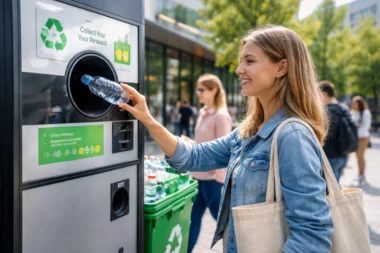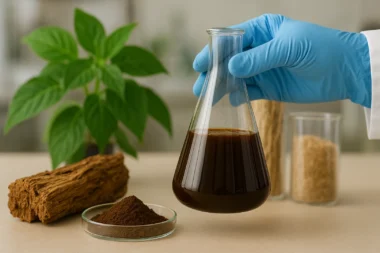Introduction
Green Distillation Technologies (GDT) is a pioneering company that recycles end-of-life tyres through an innovative and environmentally friendly process. With a solid commitment to sustainability, GDT has developed a unique technology that converts used tyres into high-value oil, carbon, and steel, addressing the global issue of tyre waste and contributing to a circular economy. This article explores the concept of green distillation technologies and focuses on the tyre Recycling Technology offered by GDT, highlighting the process and the valuable products derived from it.
Tyre Recycling Technology:
Converting End-of-Life Tyres into High-Value Oil, Carbon, and Steel
The tyre Recycling Technology developed by Green Distillation Technologies offers a groundbreaking solution for recycling end-of-life tyres, a significant environmental concern due to their non-biodegradable nature and potential for waste accumulation. This innovative process ensures that tyres are transformed into valuable resources, reducing landfill waste and the associated environmental impact.
The tyre Recycling Technology involves the following steps:
1. Tyre Preparation: The end-of-life tyres are first processed to remove external components, such as metal wire or fibre reinforcements. This preparation stage ensures that the tyres are ready for further processing.
2. Pyrolysis: The prepared tyres are then subjected to a pyrolysis process, which involves heating them in a controlled environment without oxygen. This thermal decomposition process breaks down the complex tyre materials into constituent components.
3. Oil Extraction: The pyrolysis process yields a significant quantity of high-value oil. This oil, known as Carbon Black Oil (CBO), has numerous applications, including fuel production, bitumen modification, and carbon black production for the rubber industry. The CBO obtained from recycling is a sustainable alternative to traditional fossil fuels.
4. Carbon Recovery: Alongside the oil, the pyrolysis process also produces carbon char, which contains carbon black and other carbon-based materials. Carbon black is valuable in various industries, including rubber manufacturing, plastics, and printing inks. By recovering carbon from end-of-life tyres, GDT reduces the need for virgin carbon black production, promoting resource efficiency and reducing environmental impact.
5. Steel Separation: Besides oil and carbon recovery, recycling also separates the steel wire in the tyres. The extracted steel can be recycled and reused in various industries, including construction, manufacturing, and infrastructure development.
Step-by-step process
1. Tyre Preparation: The end-of-life tyres undergo a preparation stage where any external components, such as metal wire or fiber reinforcements, are removed. This ensures that the tyres are ready for the subsequent processing steps.
2. Shredding: The prepared tyres are then shredded into smaller pieces. This increases the surface area of the tyre material, facilitating the subsequent pyrolysis process.
3. Pyrolysis: The shredded tyres are fed into a pyrolysis reactor, a high-temperature chamber designed to operate without oxygen. The reactor is heated to a specific temperature, typically around 450 to 550 degrees Celsius, initiating pyrolysis.
4. Vapour Condensation: Inside the pyrolysis reactor, the tyre material undergoes thermal decomposition due to the absence of oxygen. This produces vapors containing valuable products, such as oil and gas.
5. Oil Collection: The vapors generated during pyrolysis are condensed to separate the oil from the gas. The oil, known as Carbon Black Oil (CBO), is collected and stored for further processing and utilization. This oil has various applications, including fuel production, bitumen modification, and carbon black production.
6. Gas Treatment: The remaining gas produced during pyrolysis undergoes further treatment to remove impurities and ensure compliance with environmental standards. This treated gas can provide heat for pyrolysis or other energy applications.
7. Carbon Recovery: After the oil and gas are collected, the remaining solid residue, known as carbon char, is separated from the process. Carbon char contains carbon black and other carbon-based materials. Carbon black is a valuable product used in rubber manufacturing, plastics, and printing inks. The recovered carbon black can be further processed and used in various applications.
8. Steel Separation: Besides oil and carbon recovery, recycling includes separating steel wire from the tyres. Magnetic separators extract the steel wire, which can be recycled and used in construction, manufacturing, and infrastructure development.
9. Quality Control and Refining: Quality control measures are implemented throughout the process to ensure that the recovered products meet the required specifications and standards. Any refining or treatment necessary to improve the quality or purity of the recovered products is carried out at this stage.
10. Product Utilisation: The recovered Carbon Black Oil (CBO), carbon black, and recycled steel are valuable products used in various industries. CBO can be further processed and utilized as a sustainable alternative to traditional fossil fuels. Carbon black is used in rubber manufacturing, plastics, and printing inks. Recycled steel is reused in industries that require steel as a raw material.
By following this step-by-step process, Green Distillation Technologies’ Tyre Recycling Technology efficiently converts end-of-life tyres into high-value oil, carbon, and steel, contributing to a circular economy and sustainable resource management.
The tyre Recycling Technology offered by Green Distillation Technologies has proven efficient, environmentally friendly, and economically viable. The process provides a sustainable solution for managing end-of-life tyres while creating valuable products that contribute to a circular economy and reduces reliance on non-renewable resources.
Conclusion:
Green Distillation Technologies’ tyre Recycling Technology exemplifies the potential of green distillation technologies in addressing the environmental challenges associated with end-of-life tyres. This innovative process offers an effective and sustainable solution for tyre waste management by converting tires into high-value oil, carbon, and steel. Not only does it reduce landfill waste and the associated environmental impact, but it also produces valuable resources that can be reused in various industries. Adopting green distillation technologies in tyre recycling contributes to a circular economy, promotes resource efficiency, and supports the global transition toward a more sustainable future.



